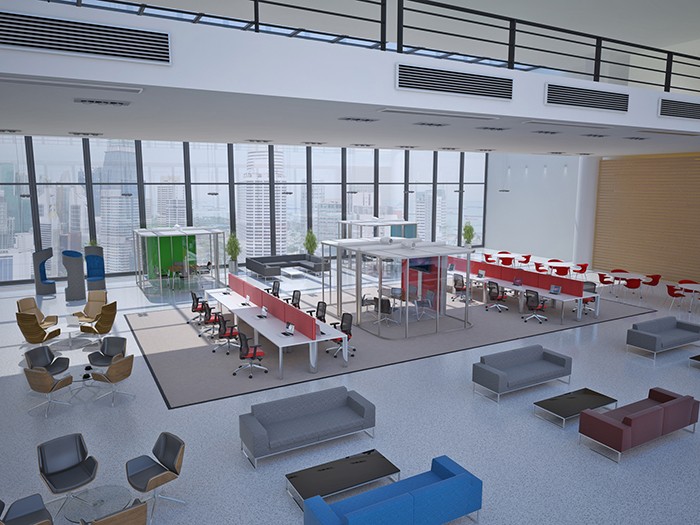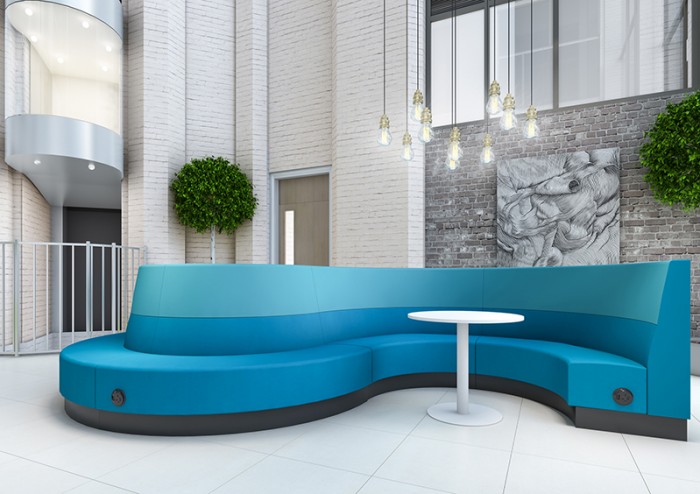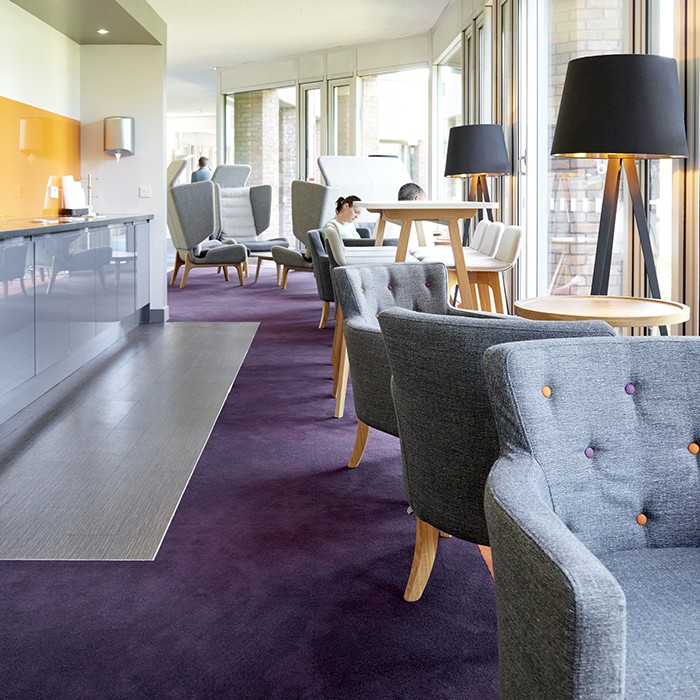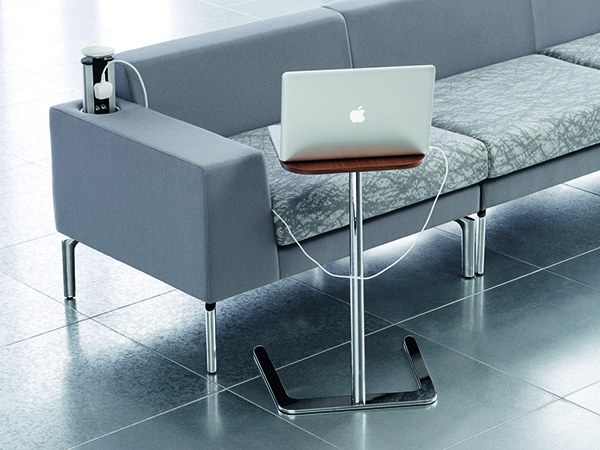Where two worlds collide…
 Mark Barrell, Design Director at The Boss Design Group, talks to us about the crossover between the workplace and hospitality sectors. The Boss Design Group is a designer and manufacturer of office seating. Established in the UK in 1983, the company now operates multiple production facilities around the world and has supplied more than half of the UK’s FTSE 100 companies.
Mark Barrell, Design Director at The Boss Design Group, talks to us about the crossover between the workplace and hospitality sectors. The Boss Design Group is a designer and manufacturer of office seating. Established in the UK in 1983, the company now operates multiple production facilities around the world and has supplied more than half of the UK’s FTSE 100 companies.
The crossover between the workplace and hospitality interior design has been taking place for many years. No longer separate and distinct, the boundaries of interior design that were once understood and abided by now no longer apply; particularly when specifying furniture.

As the corporate sector continues to evolve, softer lighting, natural materials and comfortable spaces will become the norm. Modular furniture will become a star player thanks to its unrivalled levels of flexibility and practicality that serve to improve work efficiency and wellbeing.
Furniture that would look equally at home in the domestic environment has traditionally been specified for the hospitality sector. Now, however, with the workplace having softened its aesthetic and created more relaxed and flexible open-plan spaces for employees, the corporate sector no longer looks corporate. Meanwhile, as hotels seek to fulfill the needs of its corporate clients, the arrival of work lounges, phone booths and touchdown spaces are just some of the trends that have influenced hospitality designs over recent years.
However, whilst the ‘softening’ of the workplace has been evolving for decades, there are now exciting trends emerging that will see an even greater crossover between these two sectors. The knock-on effect of this will be the diminishing differentiation between furniture products designed for either sector.

Results of recent market research conducted by The Boss Design Group clearly identifies that both corporate and hospitality sectors will become increasingly more sensitive to their environments. This in turn will lead to the advent of a variety of designated settings within which to work productively and to relax in comfort. Consequently, the demand for more flexible, multi-functional and reconfigurable furniture will grow.
In the hospitality sector, the ‘guest experience’ will become even more refined. As the conference sector continues to boom, more and more hotels are looking to grab a slice of the action. The conference sector has exploded in recent years. Today, a zealous conference-goer could travel to a new city every week and never exhaust the movable feast of issues and ideas – and of course, hotels have been quick to capitalise on the opportunity presented. Improving corporate guest loyalty is high on their agenda, and as hotels become a more popular third-space for work, the trend to improve lobbies and lounges as touchdown workspaces will prevail. The investment in furniture that balances design aesthetic with advanced ergonomics looks set to triumph in this sector.

Meanwhile, in the corporate sector, research shows that the ‘guest experience’ will become equally as important as our hotel stay. With sensitivity to the employees’ environment running high, this sector will look to introduce even greater flexibility with their choice of workspaces.
The rise of the work café will become a dominant trend in this sector. Of course, the combination of coffee and creativity have fuelled each other for hundreds of years, from the London coffee houses of the 17th century, to the cafés of 1930’s Paris. In fact, that’s how the office started 400 years ago in Edward Lloyd’s coffee shop in London (now Lloyd’s of London) and it looks likely that we will be designing our offices for the millennial generation in exactly the same way. By combining the relaxing atmosphere of a coffee shop with the advanced technology and comfort associated with a modern day office, productivity levels can actually increase. Unlike external coffee houses, employees feel more at home in the work café, whether working as an individual or collaboratively in a group, without being too remote from their office.
Reshaping cafeteria facilities and creating a workplace café where employees can meet, work, relax, eat and drink, ensures an efficient use of space that may otherwise be redundant for large periods of the day. Smart work cafés are often divided into sub zones with facilities for food and drink, collaborative spaces and quiet areas, as well as relaxation zones.
The modern office that boasts softer lighting, natural materials and comfortable spaces looks set to evolve further, and modular furniture will become a star player thanks to its unrivalled levels of flexibility and practicality that serve to improve work efficiency and well-being. Upholstered in either fabric or leather, modular furniture – especially with timber detailing – offers specifiers and interior designers significant freedom of creativity whether designing office receptions, or corporate and executive meeting areas.

The Layla Landscape sofa from Boss Design is endlessly configurable in its modular guise and offers optional power and data capability. A successful blend of superior upholstery and ergonomics, combined with the latest in technology, enables workers to complete their tasks in a comfortable and informal working environment.
Elsewhere in the corporate sector, concierge working will continue to be adopted by many of the larger employers, with facilities teams looking more closely at the hospitality sector for ideas concerning service provisions on bigger campuses. As the modern workforce increasingly includes collaborative teams of clients, partners, freelancers and contract workers – as well as traveling employees – the boundaries between workplace and hospitality settings will continue to blur, resulting in hotel lobbies and corporate offices that are as comfortable and functional as each other.




